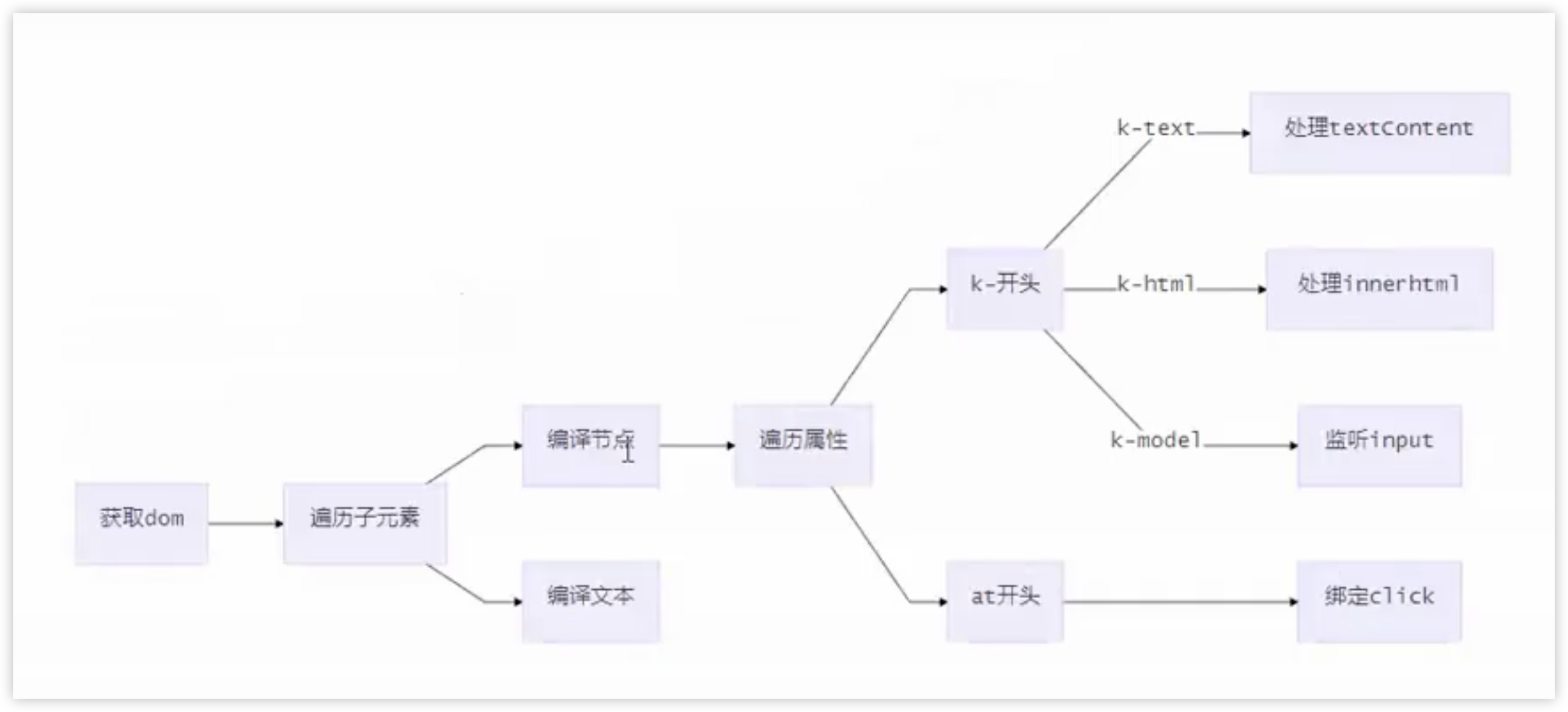vue编译模版原理
Vue 编译器架构的主要任务是将VUE模板转换为可执行的 JavaScript 代码。编译的核心逻辑是获取dom,遍历dom,对于{{}}格式的变量,dom属性,v-开头和@开头的属性等,转化成浏览器可以运行的代码。这个过程涉及以下步骤:
模板到AST的转换(Parsing):
- 词法分析:Vue 编译器首先会对模板字符串进行词法分析,将其分解成一个个词法单元(Token)。这些词法单元代表了模板中的各种元素,如标签、属性、文本等。
- 语法分析:在词法分析的基础上,编译器会进行语法分析,将这些词法单元组织成一个抽象语法树(AST)。AST 是一种用节点表示程序结构的树状数据结构,每个节点代表模板中的一个具体元素。
优化(Optimization):
- 在生成 AST 后,Vue 编译器会对 AST 进行静态分析和优化,标记静态节点。静态节点在渲染过程中不会发生变化,有助于提高渲染性能。
渲染函数代码生成(Code Generation):
- 优化后的 AST 会被转换为渲染函数,这个函数能够返回虚拟 DOM 树,包括创建虚拟节点(VNode),以及对数据变化的响应逻辑。
- 响应式系统的集成
- 数据绑定:在编译过程中,Vue 编译器会将模板中的动态数据与 Vue 的实例数据进行绑定。这样,当数据发生变化时,视图会自动更新。
- 指令处理:Vue 模板中可以使用各种指令(如 v-if、v-for 等)来控制元素的渲染。编译器会识别这些指令,并生成相应的逻辑代码。
静态提升(Static Hoisting):
- Vue 编译器还会进行静态提升,将静态节点提升到渲染函数外部,避免重复创建和销毁静态节点,从而提高性能。
内联模板(Inline Templates):
- 对于内联模板,Vue 编译器会将其直接嵌入到组件中,避免额外的编译步骤。

伪代码,模拟实现vue编译
1 | |
vue编译过程是怎么样的?
3W1H
什么是编译?
为什么要编译?
通过编译的过程,进行依赖的收集,将data中的数据模型与视图产生绑定关系,之后如果模型发生变化的时候,我们就可以通知这些依赖进行更新,从而实现模型驱动视图的变化。
Vue 编译器架构是一个高度模块化、灵活且高效的系统,通过将模板转换为高效的渲染函数,使得 Vue 应用能够以更高效的方式渲染和更新视图。
vue编译模版原理
https://thaneyang.github.io/2024/06/vue编译模版原理.html